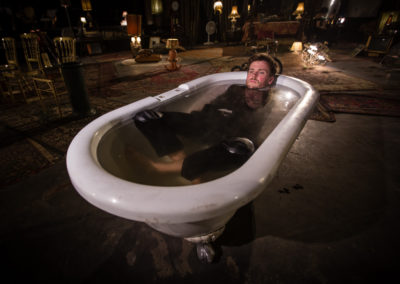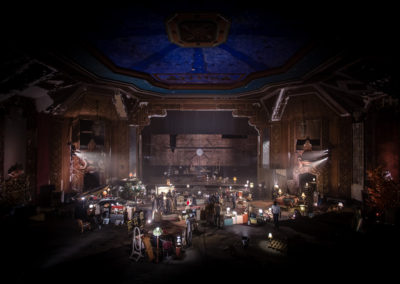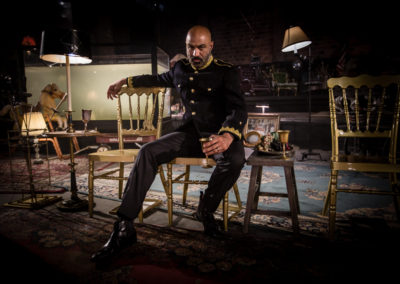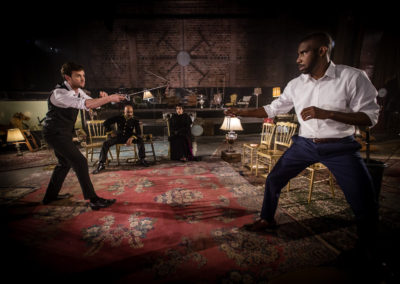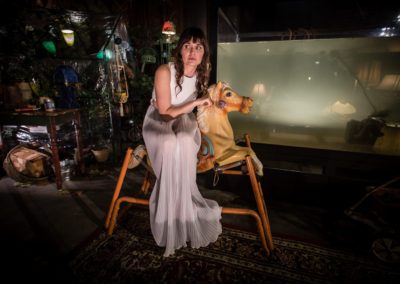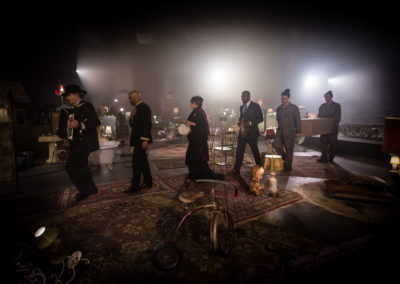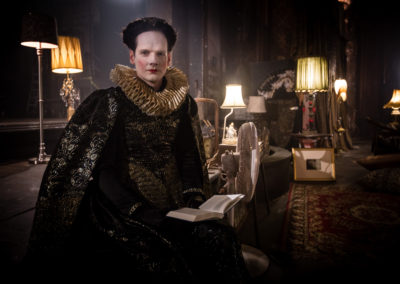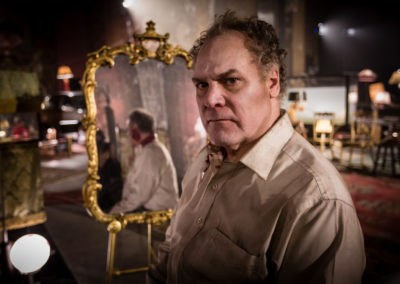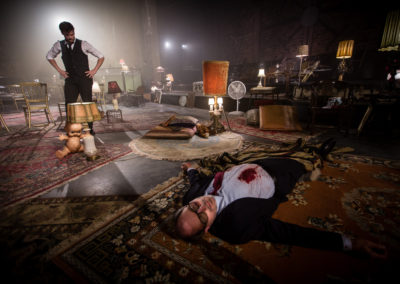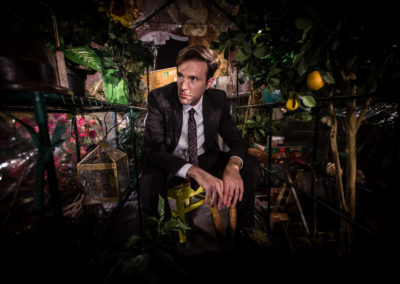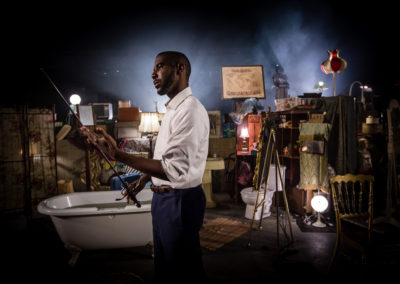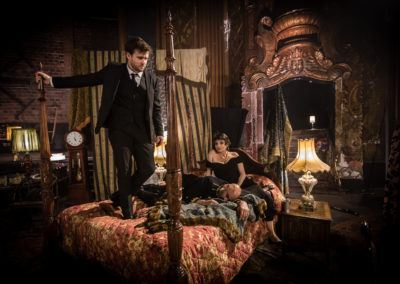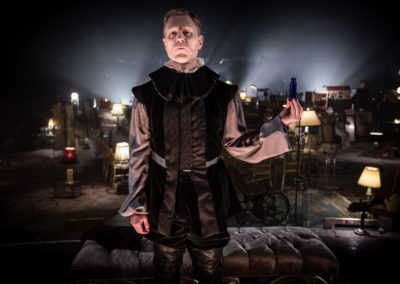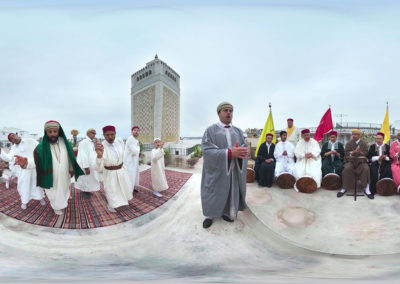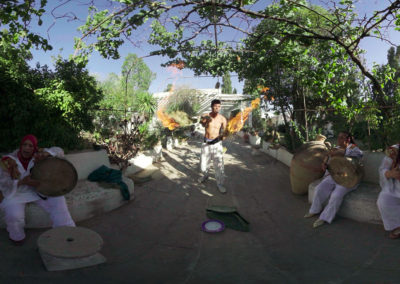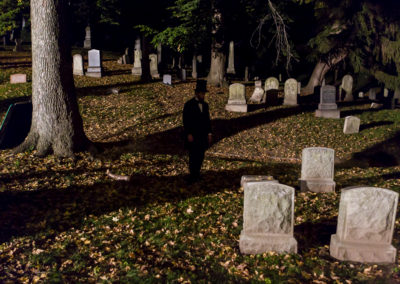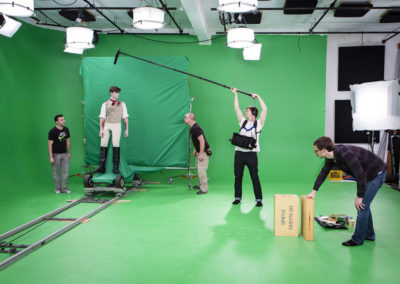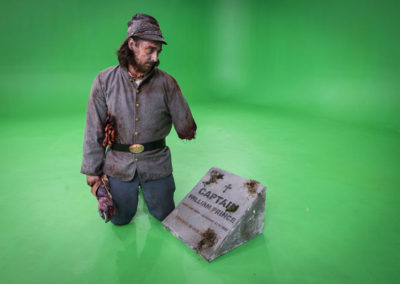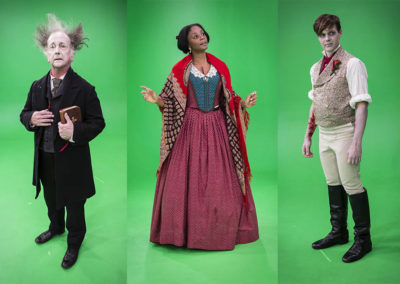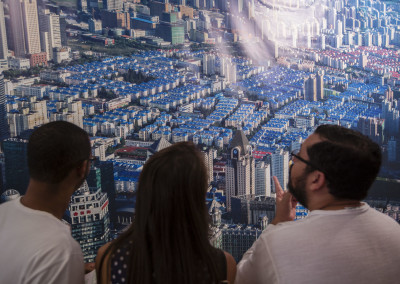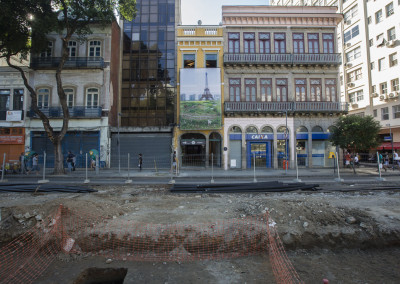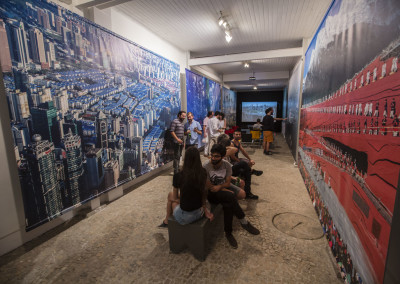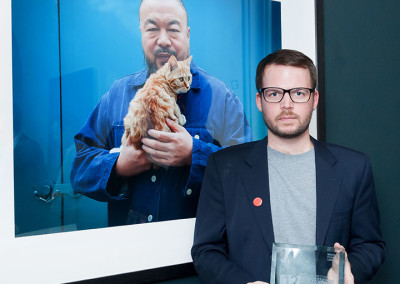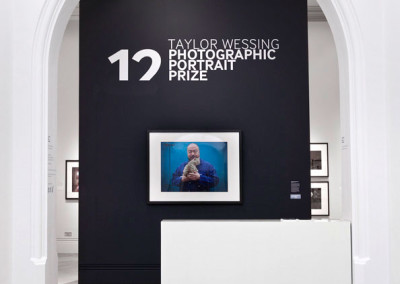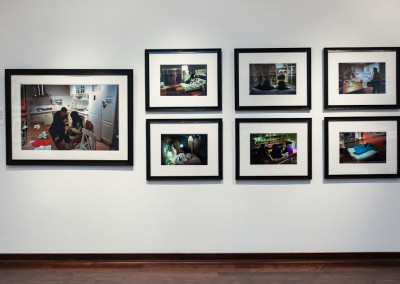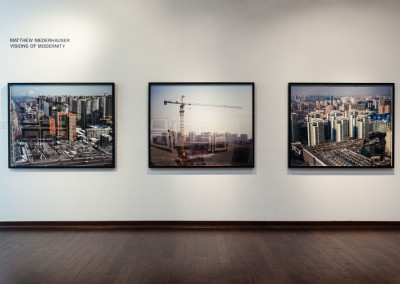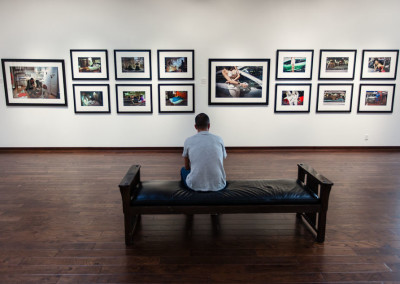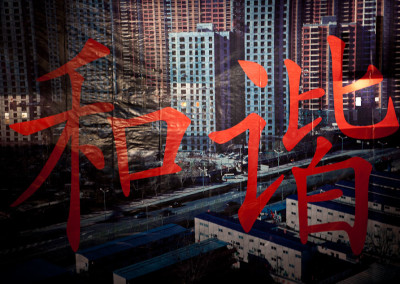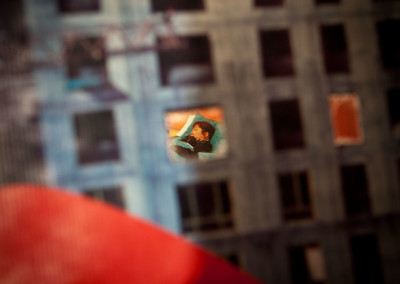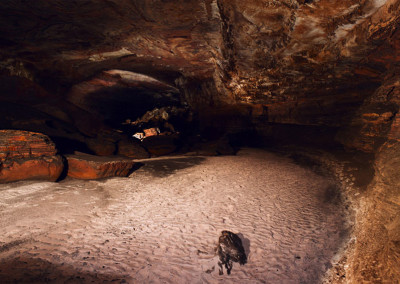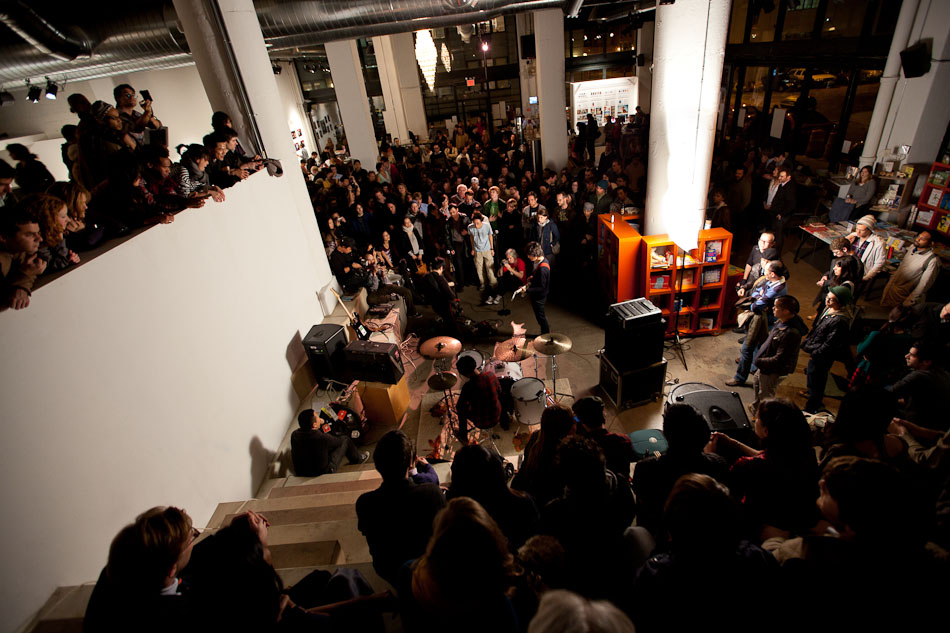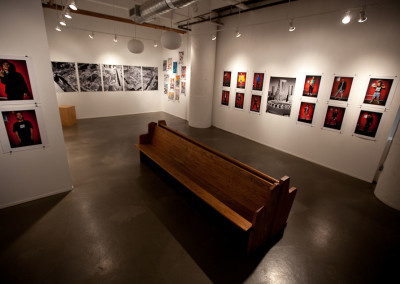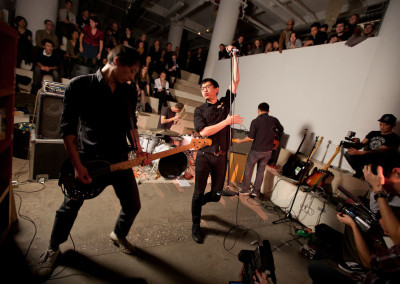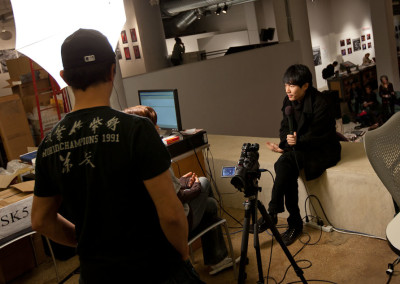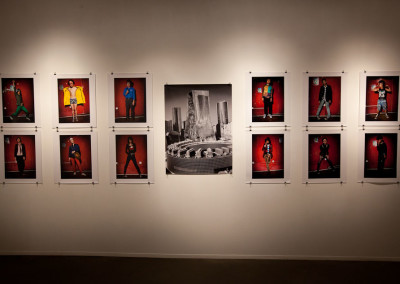“Hamlet 360: Thy Father’s Spirit” Launches with WGBH

“Hamlet 360: Thy Father’s Spirit” was one of the most challenging productions I’ve ever faced. Conversations about the script adaptation, production design, set design, music, and visual effects began over a year in advance of the shoot. As a technical director and cinematographer, I constantly helped shape the daunting scope of the project so that it would amplify and compliment a very precise set of experiential mechanics that were designed to make you feel like you were caste as the ghost of Hamlet’s dead father. It was a very intricate puzzle, and as I eventually also took on the role of editor, I got to reassemble the pieces of this one-hour masterpiece!
Many excellent minds contributed to this production, and it received glowing writeups in both the New York Times and Boston Globe. These include some of my deepest insights into the immersive production process: “We run away and hide,” Mr. Niederhauser said, “and then action is called.” All jests aside, I highly recommend carving out the time to watch the entire experience, even if you must take breaks between acts. We launched the“Hamlet 360: Thy Father’s Spirit” in coordination with WGBH, and you can find it on YouTube. Remember this is best seen in headset! If you want to hear more about the project, please listen to the podcast below from the Folger Shakespeare Library and also check out my set photography from the beautifully crumbling Paramount Theatre on Staten Island.
“Zikr: A Sufi Revival” Premieres at Sundance, LA Film Festival, and IDFA
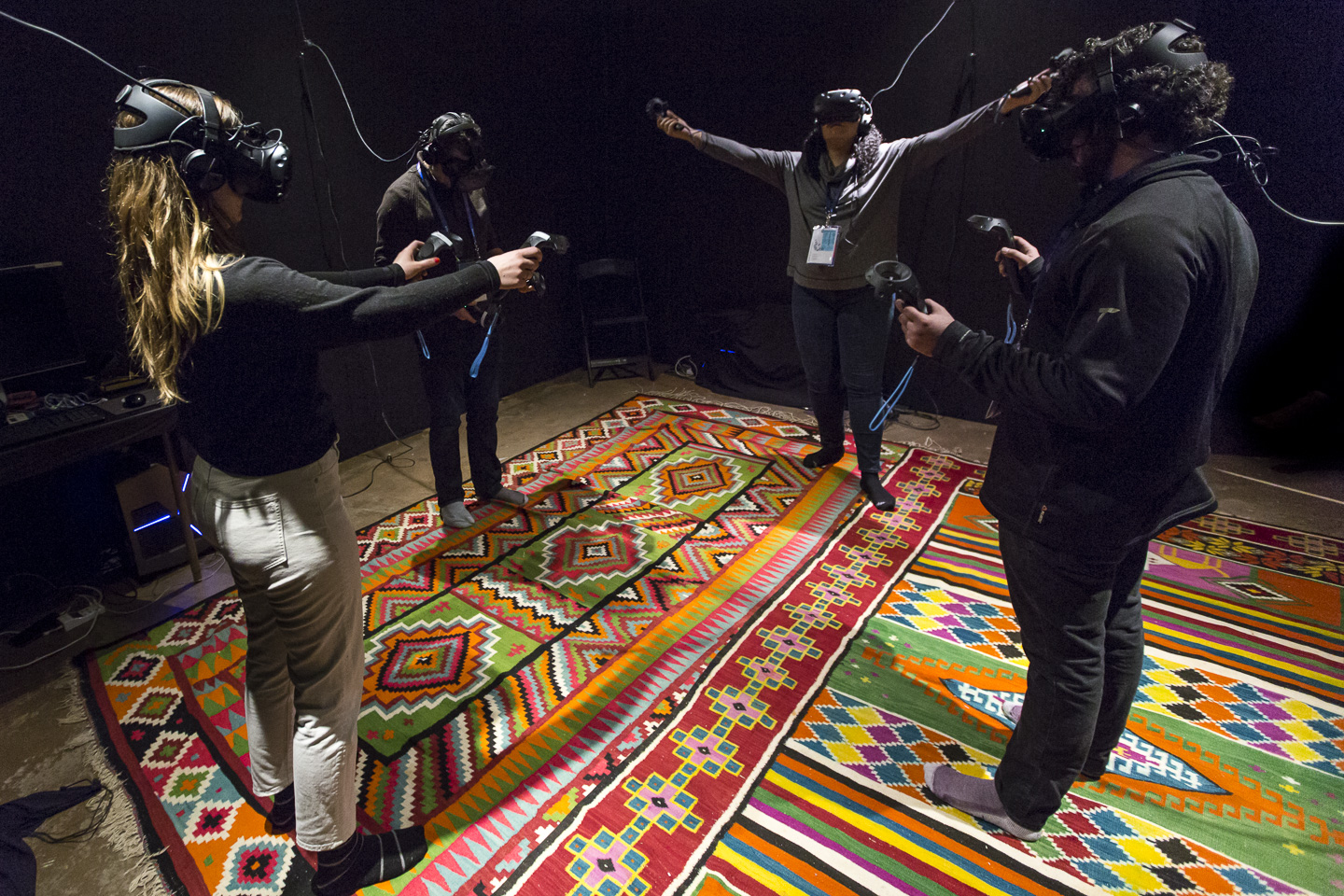
2018 was an incredible run for “Zikr: A Sufi Revival” which saw premieres at Sundance New Frontier, LA Film Festival, and IDFA DocLab. This project was developed at breakneck speed after two inspirational production trips to Tunisia. All of the hard work paid off, though, especially with the help of our amazing team of collaborators. Called “the most transcendental experience this year” by Newsweek, we also got great callouts in Wired, IDA, VR Focus, as well as a full feature from Vice! I really feel this social VR experience broke new ground in terms of pushing immersiveness within a documentary format. The interactivity brought participants closer to the subjects in a way that truly shows the power of experiential mediums over screen-based content. Please check out my interview below if you want to hear more about the project!
“Lincoln in the Bardo” Nominated for Emmy
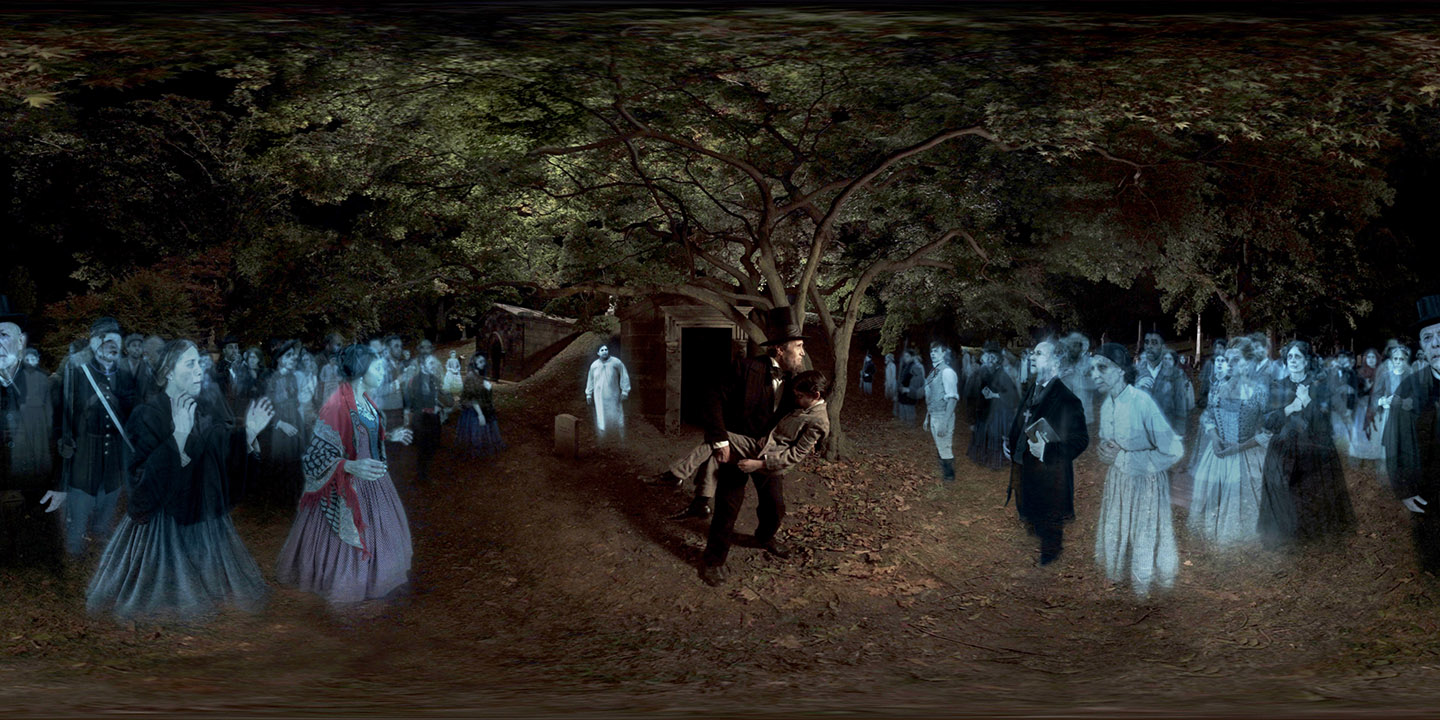
I’m super excited to announce that the adaptation of Lincoln in the Bardo I produced and shot was nominated for an Emmy for Outstanding Innovation In Interactive Programming! This was a real dream project to work on as we had the amazing support of NYTVR as well as strong connection with George Saunders for the adaptation through our director Graham Sack. The narrative and writing of the book was uniquely suited for an adaptation into VR, and it definitely pushed my creative boundaries helping bring this world to life.
Aside from the Emmy nomination, the release also garnered extensive coverage through major news and magazine outlets. Time Magazine hailed Lincoln in the Bardo as one of “five virtual reality films you should experience right now,” calling the experience “impeccable.” The project also garnered laudatory write-ups in Variety, Entertainment Weekly, Fast Company, and Publishers Weekly, which wrote an in-depth piece about its significance as the first ever VR literary adaptation.
Moreover, Lincoln in the Bardo is also being screened in cities around the world. The project was invited to the Paris Virtual festival and screened at the National Association of Broadcasters, the Unity Vision Summit, Adobe/99U’s creative industry conference, Versions (sponsored by the New Museum and Killscreen Magazine), and the Kosmopolis Literary Festival in Barcelona. AMD also sponsored screenings at SXSW and the Art of VR at Sotheby’s in New York.
I personally feel the experience garnered the nomination because of the amazing immersive environment conjured for the shoot as well as the clear role carved out for the viewer. The experience was also technologically aspirational in pushing the boundaries of VR. Although structured like a play set in a single location with the narrative unfolding around the viewer, we shot live action with heavy VFX overlays and extensive use of a greenscreen studio. This allowed us to mix practical make-up, costumes, and VFX to create unique visual looks that express the psychology of the dead souls that narrate the piece.
Check out Lincoln in the Bardo via the web, but it’s best seen through the YouTube app in a headset like the Oculus Quest or Vive!
Counterfeit Paradises at Studio-X Rio de Janeiro

One of the highlights of 2015 was installing large-scale tarp images taken from my Counterfeit Paradises series at Columbia University’s Studio-X in Rio de Janeiro. They even let me put the biggest one, taken from Hangzhou’s mini Paris, on the facade of their historic building. The opening itself also went viral on Facebook, with more than 12,000 people RSVPing to the event. Although that many people did not attend, it showed how much the work resonates in Brazil as they continue to struggle with corruption and propaganda surrounding their own development. Counterfeit Paradises examines the rapid, unrelenting modernization of China’s cities. Despite the pollution, relentless traffic, and corruption accompanying the build-up and expansion of Chinese cities, municipal governments, and developers continue to push short-term private interests over long-term sustainability. Brazil needs just as much critical analysis with regards to their emerging consumer paradigms. Below is the Studio-X Rio de Janeiro description of the exhibition in both Portuguese and English.
PARAÍSOS FALSIFICADOS
“Caso oferecida a escolha entre um bom inferno e um paraíso falsificado, pelo que as pessoas optariam? Qual seja a sua argumentação, muitas vão acreditar que um paraíso falsificado é melhor do que um bom inferno. Mesmo que as pessoas reconheçam que o paraíso é falso num primeiro momento, elas não vão ter a coragem ou se dar ao trabalho de expô-lo desta maneira. Conforme o tempo passar, elas irão esquecer de que ele não é real e vão começar a defendê-lo, insistindo que é o único paraíso existente.” – Chan Koonchung O grande plano de desenvolvimento da China continua a crescer em ritmo ininterrupto. É inegavelmente a maior infraestrutura construída na história da humanidade. Contudo, muito está em jogo para diminuir o apetite gigantesco desta força econômica, mesmo que as fraturas apareçam através do país. Poluição, trânsito incessante, e corrupção são hoje parte da vida urbana. Paraísos Falsificados explora estas fraturas através das “harmoniosas” cidades e espaços de lazer que surgem por toda a China. Estes lugares estão formatando padrões de consumo em uma grande arquitetura materialista. Mas os adicionais um bilhão de pessoas na China não podem por em prática os mesmos já insustentáveis estilos de vida experimentados nos países mais desenvolvidos. Os recursos limitados do planeta não tem como sustentar. Por hora, os noveau riche Chineses tomam parte em um campo imaginado de contentamento, reafirmando a retórica política sobre as armadilhas de seu frágil estilo de vida moderno. Esta fantasia aparece em muitos lugares: novos e alardeados distritos municipais, sítios históricos comunistas, parques de diversão, instituições culturais, e luxuosos empreendimentos residenciais temáticos. Todos eles servem para sustentar um paradigma de consumo cada vez mais importante para o curto ciclo econômico da China, em detrimento da sustentabilidade no longo prazo. As esperanças e sonhos de muitos estão entrelaçados em empreendimentos espúrios, muitos dos quais, na prática, permanecem subutilizados. Estes terrenos fantasiosos e alienados são os paraísos falsificados da China.COUNTERFEIT PARADISES
“Given the choice between a good hell and a counterfeit paradise, what will people choose? Whatever you say, many people will believe that a counterfeit paradise has got to be better than a good hell. Though at first they recognize that the paradise is bogus, they either don’t dare or wish to expose it as such. As time passes, they forget that it’s not real and actually begin to defend it, insisting that it’s the only paradise in existence.” – Chan Koonchung China’s grand development plan continues to grow at an unrelenting pace. It is undoubtedly the largest infrastructure buildout in the history of mankind. However, too much is at stake to slow down such a gargantuan economic force, even as cracks appear in it across the country. Pollution, relentless traffic, and corruption are now a daily part of urban life. Counterfeit Paradises explores these cracks through the “harmonious” cities and sites of leisure emerging throughout China. Such locations are shaping consumer patterns into a greater architecture of materialism. But an additional billion people in China cannot enact the already unsustainable lifestyles enjoyed in more developed countries. The pooled natural resources of the planet cannot bear it. For now the Chinese nouveau riche partake in an imagined space of contentment even as reassuring political rhetoric regarding the trappings of their “modern” lifestyles wears thin. This fantasy plays out in many spaces: newfangled municipal districts, communist heritage sites, amusement parks, cultural institutions, and themed luxury residential developments. They all serve to prop up a consumer paradigm that is increasingly important to the short-term economic growth of China but detrimental to its long-term sustainability. The hopes and dreams of many are woven into such spurious ventures, even if in practice, many of them remain underused. These fanciful but alienating terrains are the counterfeit paradises of China.“The Nine Lives of Ai Weiwei” Wins John Kobal Award
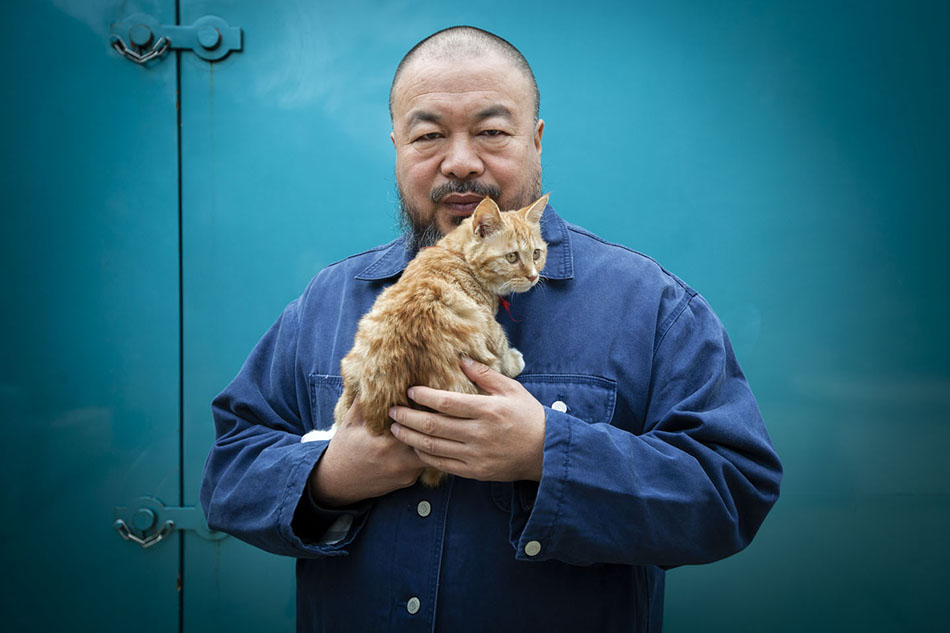
I am very pleased to announce that I was given the John Kobal New Work Award in affiliation with the 2012 Taylor Wessing Photographic Portraiture Prize at the National Portrait Gallery in London this November. It was quite a whirlwind of an evening, and I must say I was completely honored to be awarded amongst all the great work that also hangs in the 2012 Taylor Wessing Photographic Portraiture Prize exhibition. I can’t encourage people enough to go visit and see for themselves. It will be hanging in the National Portrait Gallery until February 17, 2013. The portrait of Ai Weiwei was originally commissioned for Foreign Policy’s 2011 edition of the Top 100 Global Thinkers issue. It has since gone on to appear on the cover of the Telegraph’s Seven Magazine as well as in other media outlets. Check out the installation shots below. It stands right at the entrance of the exhibition. Critics seem to dig it so far. Lastly, here is the text from the accompanying catalog:
“Matthew Niederhauser’s fascination with China was forged during his high-school studies in Mandarin, and the American photographer now lives in Beijing, where he documents aspects of Chinese life for a range of publications including The New Yorker and Time. Artist and political activist Ai Weiwei, the subject of Niederhauser’s entry, has crossed those lines on many occasions. At the time the portrait was taken, as a commission for Foreign Policy magazine, Ai was being held under virtual house arrest and forbidden to leave China following his three-month detention a year earlier. Wanting to capture Ai with one of the many cats that hang around his compound, Niederhauser persuaded him to pose with a ginger stray, its colouring setting off the teal-blue gates of the studio. ‘There was a tense moment when I didn’t think the cat was going to cooperate, but it finally glanced back, allowing me to get a few frames with everything melding together.’
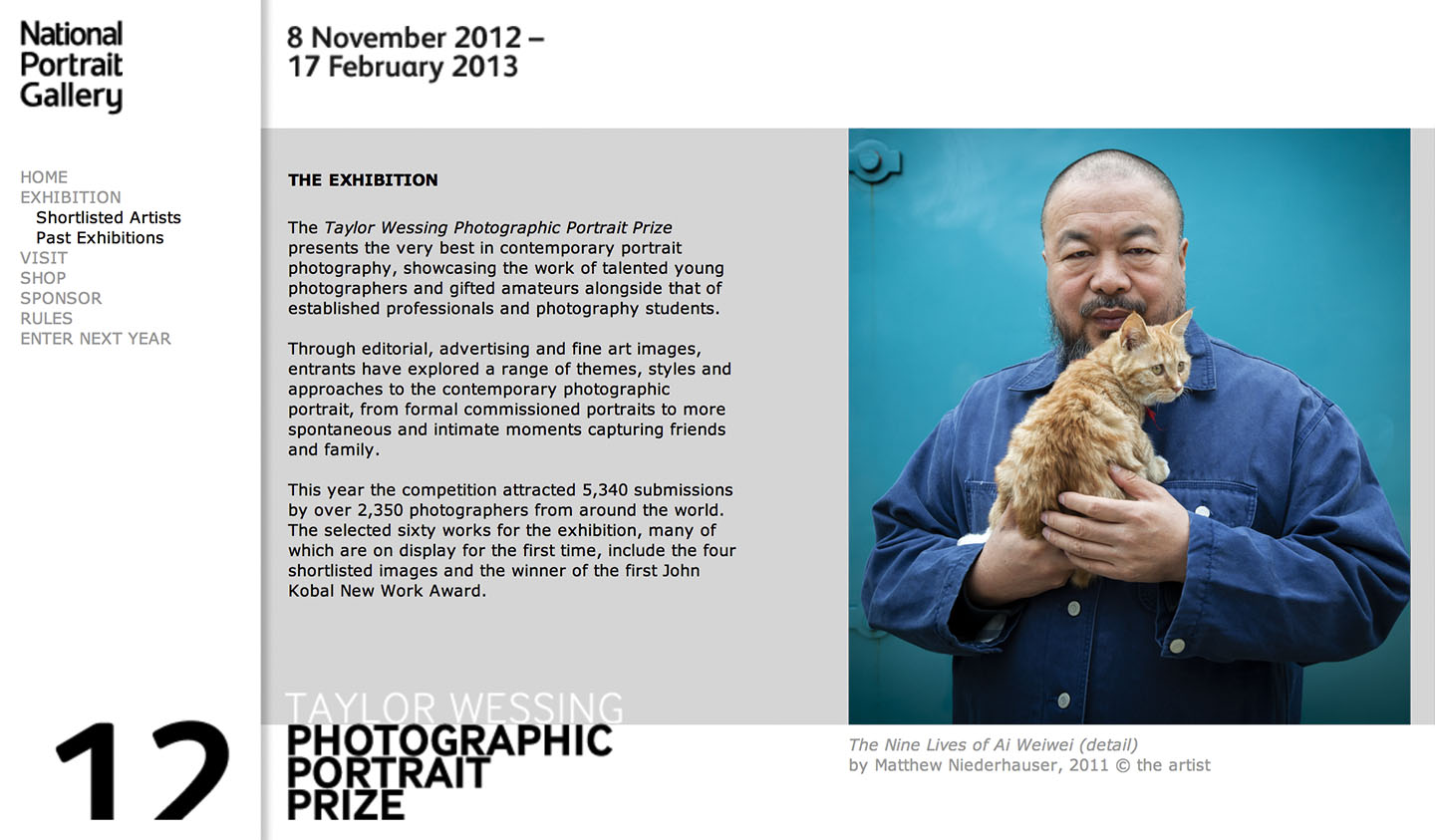
Visions of Modernity at Fahey/Klein Gallery

It is with great pleasure that I announce the opening of my first solo exhibit at the Fahey/Klein Gallery in Los Angeles. The show delves into work from my Visions of Modernity project, exploring the unsustainable development of metropolitan regions and consumer culture in China. It also features new pieces printed on tarps that run up to 32 feet in length. I am very excited about the installation. It will be open until October 20, 2012 so please check it out if you are in the Los Angeles area. Here is the press release from the gallery:
MATTHEW NIEDERHAUSER Visions of Modernity
September 6 through October 20, 2012
The Fahey/Klein Gallery is proud to present Matthew Niederhauser’s unique vision of China’s consumer awakening, Visions of Modernity. Comprised of four distinct series, this extraordinary documenting of Beijing’s rapid social, economic, and technological development in the first decade of the 21st century highlights the unique and idiosyncratic directions of China’s unprecedented growth into, as Niederhauser calls it, China’s “Gilded Age.” As a new capitalist ethos pervades Chinese culture, Niederhauser’s Visions of Modernity documents the complex, fraught, and often-ironic stages of this epic transformation.
“Megablocks,” the first series in the project, examines the formation of a new Beijing surrounding the capitol’s former imperial core, and with it, a new vision of modern China. Megablocks form as huge swaths of land are fashioned into towering apartment high-rises interwoven with malls and public spaces. Once built, they form distinct urban islands, bounded by grand avenues and hemmed in by larger highways. Their imposing and monotonous facades mark an elaborate transformation of social practices that continues to occur at an alarming pace across the city.
As megablocks become the status quo across Beijing, they not only drastically reshape the city, but also the manner in which people consume. In 2006, Ikea opened a massive 430,000 square foot location in Beijing, currently the third largest in the world. Stimulated by the construction boom and the increasingly materialistic nature of today’s China, Beijing proved fertile ground for Ikea’s economical but trendy furnishing. In “Homes,” the second series in Visions, shoppers’ desirous looks and gestures abound as they settle into couches, armchairs, and beds, “living” in Ikea’s numerous showrooms. Each photograph suspends the customers in their appropriated Ikea environments, as if they were in their own residences. Here, newfound nesting habits shaped by megablocks are satisfied.
In the new Beijing economy, no one wants to be a pedestrian, and vehicle purchases in China surpassed the United States for the first time in 2009. The biennial Beijing International Automotive Fair is ground zero for the consumer frenzy and ostentatious materialism of hundreds of thousands of Chinese car enthusiasts. Manufactures gather to capitalize on the seemingly insatiable demand for automobiles. Provocatively styled models strike poses in every booth while eager new consumers clamor to take a seat in their favorite vehicle in the giant exhibition halls. Niederhauser’s “Cars” series epitomizes the praxis of China’s reification and fetishism enabled by the increase of disposable income, opportunity, and a culture of consumption on overdrive.
But ownership is never enough, and acquisition does not quench the consumer drive. After Beijing’s nouveau riche tire of monotonous megablock apartments and endless traffic jams, they need a vacation. While a passport to the monuments and landmark of the world still signal the highest social status and opportunities of wealth, a favorite local travel destination for the upwardly mobile is the Beijing World Park. Tucked into the southwestern corner of the city, the Beijing World Park boasts over a hundred small-scale replicas of famous monuments and buildings from all over the world. The final series of the quartet, “Vacations,” captures staged encounters with objects of “modern” and “civilized” lifestyles, a bizarre artifact of the post-Communist materialism of China’s meteoric expansion.
Ultimately, Beijing serves as a template for China’s cultural ambition, and Visions of Modernity epitomizes the competing moral and cultural directions of the largest emerging capitalist market on the planet. Like many established first-world economies, the nouveau riche of Beijing spend most of their disposable income on homes, cars, and vacations. Niederhauser’s Visions frames the tension of desire and acquisition, the fantasy of consumer capitalism being lived out in the façades of Western imports. While China’s exploding population consolidates into ever increasing urban densities, the corresponding rise in wealth enables acquisition as fantasy fulfillment as a replacement for a culture being subsumed by mass-produced facsimiles of history, normalcy, and tradition. Visions of Modernity engages Beijing’s embrace of the mirage of consumer satisfaction, the quixotic pursuit of happiness through the possession of a never ending barrage of the new, the improved, the modern.
Matthew Niederhauser is an artist, photojournalist, and videographer currently chronicling the massive changes in Chinese culture. His photography has been featured in The New Yorker, National Geographic, New York Magazine, Newsweek, The New York Times, The NYT Magazine, Time, and several important international publications. He continues to develop his documentary projects in China and lives in New York when not abroad. This is his first show at the Fahey/Klein Gallery.
Visions of Modernity Installation – Propaganda Banners
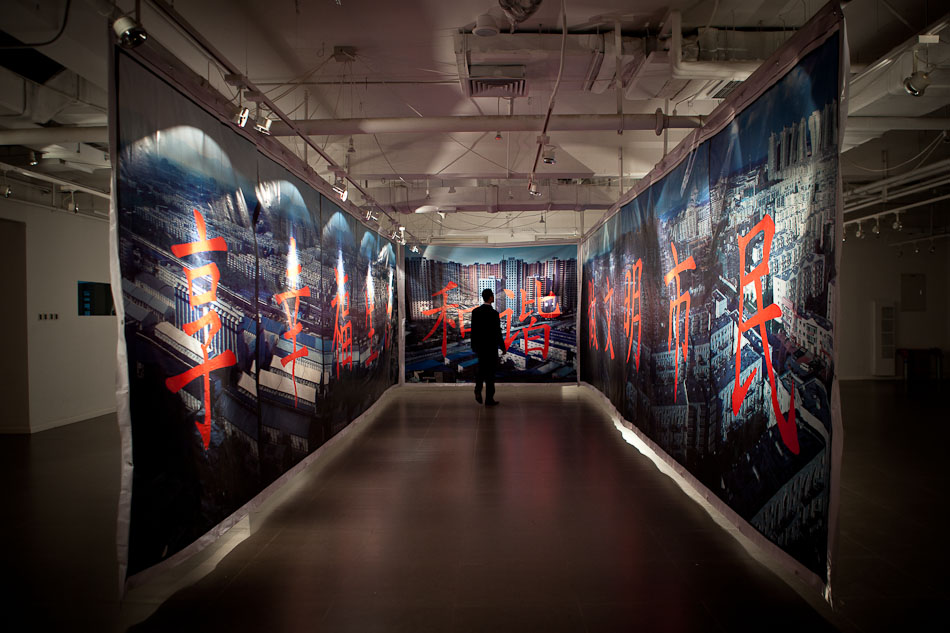
Check out my newest creation. This incarnation of Visions of Modernity examines the “harmonious” transformation of Beijing by recreating propaganda banners espousing “modern” and “civilized” lifestyles. Unfortunately such optimistic rhetoric does not always reflect the current state of urban planning. Megablocks dominate infrastructure surrounding Beijing’s medieval core. Huge swaths of land are handed over to developers and fashioned into towering residential high-rises interwoven with retail and public spaces. The photographs on the tarps depict some of the largest developments in the city. Once constructed, megablocks form distinct urban islands, bounded by grand avenues and further hemmed in by ring roads. Any sense of fluidity within the urban fabric is lost. Entire districts are laid out and rebuilt in such a fashion – like cogs in a machine switched out for newer parts.
As the imposing and monotonous facades of megablocks become the norm, they also reshape the manner in which people live and consume by encouraging social atomization in Western-style apartments. Global commerce immediately took notice of this elaborate transformation of cultural identity. With an increasingly materialistic China in its sights, Ikea opened in Beijing what was at the time its single largest outlet in the world. The compartmentalized lifestyles Ikea put on sale catalyzed a new range of communal practices that are represented in the photographic dioramas attached to the tarps. These Ikea showroom interiors perfectly fit the megablock mold even when unsustainable in nature if implemented throughout the rest of China. There is now a substantial gap between the “modern” and “civilized” vision of Beijing found on banners plastered around the city and how it is actually manifesting in daily practice. Any sense of harmony remains elusive in the midst of this developmental explosion.
For this installation I strung together tarps measuring up to ten meters in length to create photographic corridors of urban landscapes emblazoned with actual propaganda messages used by the Beijing municipal government. Small holes are then cut into particular buildings on the tarps that reveal photographic dioramas of Ikea lit by a single bulb. The size of the installation can be adapted to fit almost any space. In the future I would like it to cover entire buildings. All photographs were taken in Beijing. Check out the video below for a better feel.
Happy Magic Water Park at ME Contemporary, Copenhagen
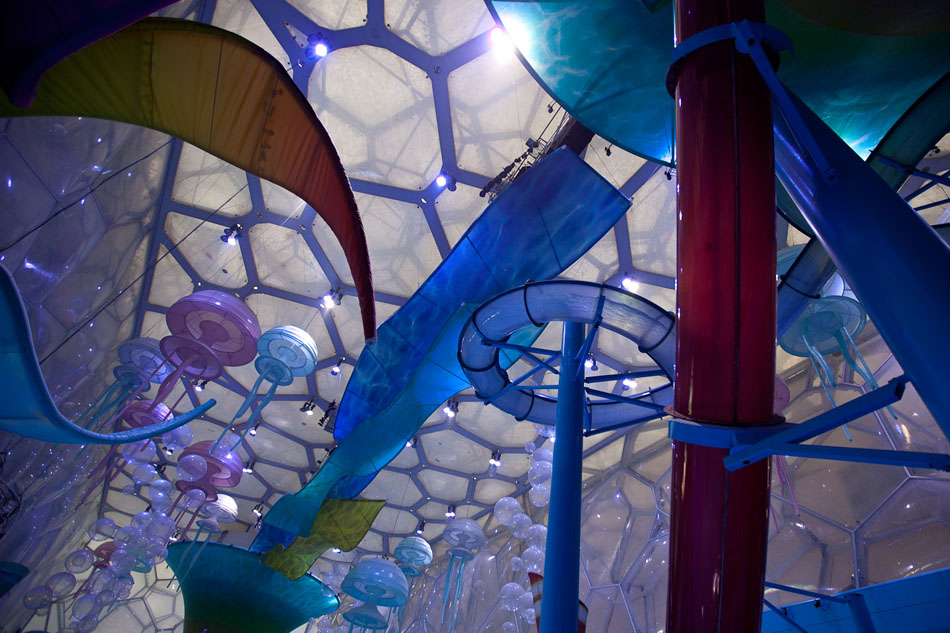
I was very fortunate to be approached by fellow MFA student, and established artist, Mathias Kessler to participate in a group show celebrating the opening of ME Contemporary‘s new space in Copenhagen. He was looking to pair up his Cueva de Charles Brewer photographs with some of my own for the exhibition. After some consideration it became apparent that my Happy Magic Water Park series would work particularly well, not just because of its artificial cave nature, but also because it reacts well with the beautiful orange hues of Mathias’ prints. Here is what the gallery had to say:
“Mathias Kessler has, in recent years, been using his camera to record nature from remote areas the average person rarely reaches. By relating to modern man’s domination over nature, the artist portrays areas that in the media are doomed to be infinitesimal: the icebergs, and areas where no man, certainly not modern, have actually been and where nature in its own right is far superior. In one such instance, lie these giant caves whose only access is from Mount Tepui’s vertical hillside. As a counterpart to these enormous, almost mythical caves, Kessler has invited photographer Matthew Niederhauser, whose recent projects investigate modern China, to exhibit photos of the Happy Magic Water Cube, Beijing Water Cube Water Park. The meeting between the artificially staged water park with its eerie blue color and Kessler´s earth-colored cave photos creates a new reality that in an interesting and unintentional manner serves to reinforce their own story.”
I really wish I could be out there to see the exhibit. Apparently one of our sets already sold. If you are anywhere near Copenhagen please check it out and let me know what you think. Thanks again to Mathias for including me as well. Hopefully it will be the first of many more collaborations.
Sound Kapital Book Launch: Chinese Punk Decends on powerHouse Arena
After three years of photographing and months of preparation, my first monograph, Sound Kapital, finally launched at the powerHouse Arena in New York this past Thursday. Hundreds of people showed up and the prints looked wonderful in the large space. The real show, though, were the bands who flew in from Beijing to kick off their first USA tour. I was honored that P.K. 14, Carsick Cars, and Xiao He played short sets at the opening. These performers provided a great deal of inspiration to commit to the Sound Kapital portrait series. They are easily making some of the best music coming out of China. You can see videos of their performance thanks to Punkcast, and check out the catalogue text from powerHouse below:
Even after hosting the 2008 Summer Olympics, China remains in a liminal realm caught between the socialist idealism of old and a calamitous drive for wealth spurned by free market reforms. This seemingly unbridgeable gap tears at the country’s social fabric while provoking younger generations to greater artistic heights. The unique sound emerging from Beijing’s underground delves deeply into this void, aggressively questioning the moral and social basis of China’s fragile modernity even as it subsists upon it.
This formidable new wave of Chinese musicians is taking the city by storm. Revolving around four venues spread across Beijing, a burgeoning group of performers continues to work outside of government-controlled media channels and, in the process, tune the ears of the international music community to Beijing. They now constitute a fresh, independent voice in a country renowned for creative conformity and saccharine Cantonese pop.
In Sound Kapital, photographer Matthew Niederhauser presents a powerful portrait of the performers and personalities at Beijing nightclubs including D-22, Yugongyishan, 2 Kolegas, and Maolive House. These clubs remain at the core of the city’s creative orgy by hosting an eclectic mix of punk, experimental, rock, electronic, and folk performances. Additionally included are concert posters and illustrations that encapsulate the underground scene in Beijing as well as a sampler CD of music. There is no doubt that these musicians will continue to break ground within Beijing’s nascent artistic landscape and magnify an already expanding realm of independent thought and musical expression in China.
